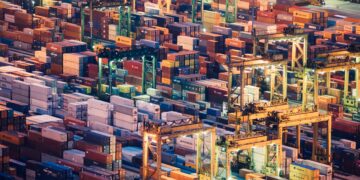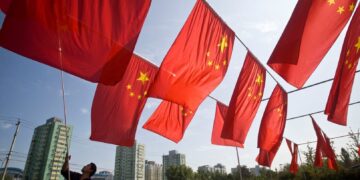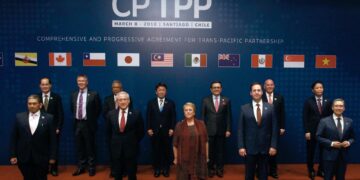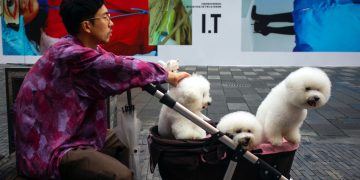Though compensation is important, career progression, better benefits, and a company’s strategic vision are all critical factors in whether an employee takes a new job.During the last decade, the Chinese economy grew at a spectacular rate, continuously lifting the ambitions and expectations of the Chinese workforce and creating unprecedented challenges in the areas of talent recruitment and retention. Despite slower economic growth, business and human resources professionals may face an even greater challenge in recruiting and retaining talent in 2013 and beyond than in past years.
In recent months, deteriorating global economic conditions and the challenge of moderating and redirecting China’s growth path, which was driven by excessive asset investment and export activities, has affected China’s economy. New government policies attempt to contain inflation and rebalance the economy towards a more sustainable path and pace in which domestic consumption is expected to play a larger role. Not all sectors have been affected in the same way. Investment, financial services, and most industrial activities have felt the pressure more than domestic-driven consumer or life sciences sectors. After a buoyant 2011, MRI China Group (MRIC) has noted some easing in the job market in 2012, with fewer opportunities, longer decision processes, and more selective, budget-conscious employers. Employees, who started 2012 with huge ambitions, have mildly adjusted their expectations but continue to ride a much stronger job market wave than their peers in North America.
STILL AN EMPLOYEE’S MARKET
At the end of 2011, 33 percent of the respondents to MRIC’s talent environment survey intended to change jobs in 2012, and many managed to do so. Only 23 percent of respondents had not been approached with a job offer in the previous year. The high-compensation levels job changers received in 2011, as well as other trends specific to the China talent market, explain these trends.
- During the 2008-09 global economic crisis, employees stayed put. Having been in the roles that they landed before or during the economic slowdown for at least three years, employees see 2012, the year of the Dragon, as a good time to consider a career move.
- China’s rise to become the world’s second largest economy has bolstered the confidence of employees at management and professional levels that China—and the Asian countries that are major business partners—is coming of age, while North America and Europe flounder.
- China’s one-child policy, introduced in 1979, is now starting to produce profound demographic changes in China’s labor market. The number of new workers in the labor force reached a tipping point in 2005, and is now steadily decreasing.
Even though China’s GDP growth has slowed from a peak of almost 15 percent, the number of job vacancies in China continues to grow. This year, wages are still expected to rise an average of 8 percent compared with 10 percent in 2011, but this average number hides circumstances where management and professional talent were demanding and obtaining raises of more than 20 percent in 2011. More than 63 percent of MRIC survey respondents received wage increases of at least 20 percent when changing jobs, and 30 percent of respondents received a raise of 40 percent or more. In today’s economy, these employees still demand 10 to 20 percent salary increases, or even more for in-demand talent. In this context, employers in China still struggle to retain good talent. Tempered economic growth and a more competitive economic environment have also forced companies to sharpen the quality of their products and services as well as improve operating efficiency. These structural changes create new talent management challenges and opportunities. The MRIC Talent Environment Report surveyed 4,962 mid- to senior-level managers across a wide range of businesses, industries, and locations. The report surveyed 3,811 individuals in mainland China, 532 in Hong Kong, 325 in Singapore, and 294 in Taiwan. Common patterns emerged from our survey albeit with some variation across sectors and seniority level.
- Compensation remains a key retention factor, but respondents said they stay at their company because of career development opportunities, a company culture they appreciate, and a good work-life balance. Chinese professionals, including young professionals, describe a good working environment as a business with a clear vision that supports meritocracy.
- When changing jobs, work-life balance becomes less important than the candidate’s confidence in the leadership and the strategic direction of a prospective employer.
- In mainland China, benefits are as critical as compensation. Salaries have increased a lot in China so employees are keen on finding tax efficient compensation packages where allowable or practiced. With good compensation in hand, good candidates now also shop for better benefits, such as leave time, a car, or medical insurance.
- Health care is a concern for all levels of professionals in mainland China, and senior managers in particular place great importance on such health benefits.
LOCAL VERSUS FOREIGN EMPLOYERS
Thirty-six percent of respondents from both local and foreign companies rate career promotion opportunity as the main motivator for staying in a job. However, while 20 percent of respondents working for local companies in mainland China highlighted benefits as a key retention incentive, only 12 percent of Chinese employees at foreign companies said the same. Respondents from local companies also put stronger emphasis on leadership and strategic direction at their company than employees of foreign companies, where work-life balance and the company culture seem more important to talent retention.
Local employers have become more attractive in mainland China. Many local employers tend to be more flexible than foreign companies in the way they structure total compensation with allowances in lieu of compensation. State-owned organizations often offer subsidized housing and private employers offer stock options to their senior management. Senior managers are also attracted to local employers because strategic decisions are made here—since it’s the company’s headquarters and not the Asia or China office of an international company—and they have the possibility to rise to the top.
THE GENERATION GAP
There is a marked progressive difference in the importance employees in different age groups place on meritocracy, transparency, and governance. The more senior the manager, the less it is an issue. However, top executives must recognize the importance placed on such issues by their management workforce. For international employers, this means demonstrating that it is possible for a Chinese employee to rise to the top job. For local firms, which tend to operate in a more autocratic and relationship-driven manner, it means more openness through the implementation of best practices in talent management. Young and middle managers are more likely to stay in a job if they feel they have a career path.
Likewise, concerns over a company’s corporate citizenship and environmental stewardship seem to be less prevalent higher up the management chain, whereas one in 10 junior managers now rate environmental concerns as one of their top two motivators for taking a job. Some employers may want to emphasize their focus on environmental sustainability to attract young talent.
WORK-LIFE BALANCE
Unlike in more mature markets, in China, the ability to meet family obligations and access to good health and benefits programs prevail over flexible work schedules. While MRIC did not investigate this matter in greater detail, MRIC believes that meeting family obligations in China has to do with money—i.e. buying a house, car, or providing a good education—to support the family.

LABOR MOBILITY REMAINS A CHALLENGE
Mainland Chinese employees are eager to relocate abroad for their careers. Much has been said about wealthy Chinese citizens who invest in the United States or Europe to emigrate for reasons such as their children’s education. MRIC’s data confirms this trend from a job market perspective. (Note: The majority of respondents work in international firms.)
The survey also indicated that more mature talent—typically sought after for management positions when a company expands geographically—have clear views on their preference for relocation. These views typically involve an “upgrade” to a city that is perceived as offering career advancement and is more attractive as a family destination. For example, employees are willing to relocate to a city with a better quality of life and better education options for their children.
Employees in Guangzhou had the highest appetite for relocation (59 percent). However, Guangzhou respondents, many of whom are already immigrants to the city from surrounding regions, are less “internationally-minded,” according to survey results, and would rather relocate to other cities in China or neighboring markets. North America and Europe are not among the top relocations for respondents from Beijing or Shanghai. Within China, respondents from Beijing were very likely to say they would relocate to Shanghai (53.2 percent) well ahead of Tianjin (17.7 percent), Qingdao (14.1 percent), and other Chinese cities, but Shanghai employees are not as likely to want to move to Beijing (30 percent). Beijing’s attractiveness is impacted by pollution levels, and Shanghai respondents said they felt it wasn’t as easy to “blend in” in North China than in cosmopolitan Shanghai.
Overall, employees’ appetite for relocation to a few mainland inland destinations seems to be increasing, compared with last year’s findings. This year Suzhou, Hangzhou, Qingdao, Shenzhen, Guangzhou, Chengdu, Wuxi, Nanjing, and Tianjin were cited by more than 10 percent of mainland-born respondents. Solutions to fill talent shortages in new development areas include investing in training by municipalities and employers to groom local talent while providing incentives through talent sourcing programs for experts based in foreign and coastal cities.
RECOMMENDATIONS
Unlike in 2011 when companies’ top challenge was to recruit at high speed with ultra-competitive salaries, this year’s market conditions offer employers more opportunities and time to invest in talent management as their short-term needs can be balanced with longer-term thinking. Employers should:
- Re-evaluate talent for current and future requirements
- Hire top talent now while there is more talent available
- Balance the short-term actions of performance management with long term strategies of staff engagement and career development
Build company culture
If organizations invest in engaging their talent, performance will increase and retention will be a natural consequence. Engagement should always be a top priority. Engagement is linked to employee buy-in of the leadership, vision, and values of the company. Employees who do not engage or fit in with the company culture can be replaced. To achieve engagement and retention, career paths and perspectives must be clear inside the organization, and each employee’s short- and long-term objectives and their place in the organization should also be clear.
Upgrade and develop
Identify good performers and high-potential employees inside your company as well as in the market. Benchmark your talent and develop those employees with the potential to grow into a leadership or senior expert role to meet your organization’s needs in the future. Handling resource and performance management internally and recruiting externally can be an opportunity to assess and revamp people and roles to provide a new competitive advantage for the organization.
[author] Christine Raynaud is the CEO of MRIC, the MRI China Group, which provides executive recruitment services across China, Hong Kong, Taiwan, and Singapore. She is based in Hong Kong. [/author]
































